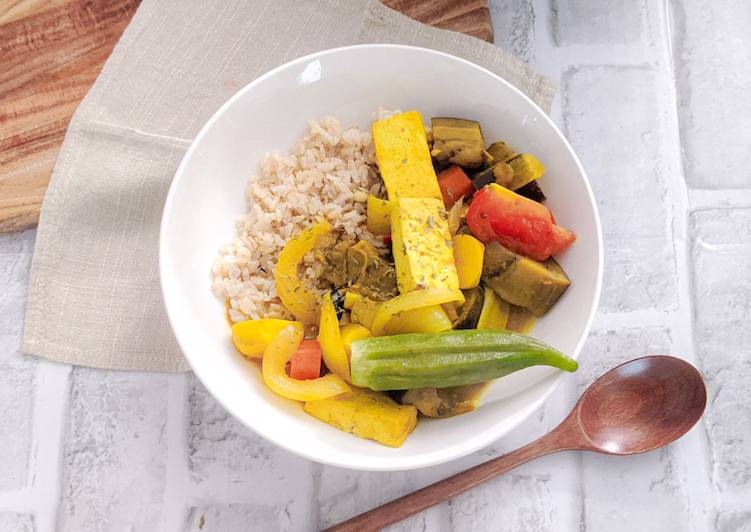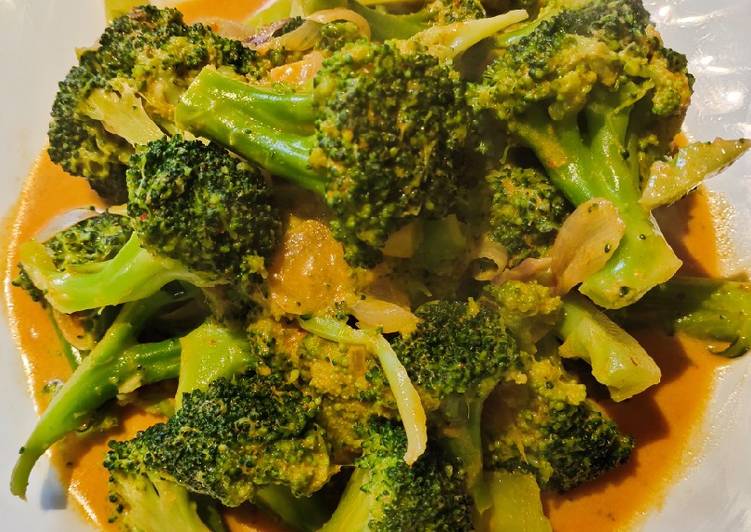
Hey everyone, hope you’re having an amazing day today. Today, I will show you a way to prepare a special dish, vegan japanese curry. It is one of my favorites. This time, I am going to make it a little bit unique. This will be really delicious.
Vegan Japanese Curry is one of the most well liked of current trending foods in the world. It is easy, it is fast, it tastes yummy. It is enjoyed by millions daily. They are fine and they look wonderful. Vegan Japanese Curry is something which I’ve loved my whole life.
This vegan Japanese curry is a more traditional take on our popular Japanese Kabocha Curry recipe. We've substituted potatoes for the slightly seasonal kabocha squash, making this a more accessible and year-round vegan Japanese curry. Japanese curries are incredibly popular in Taiwan and were a staple of my childhood. Vegan Adaptable This vegetarian Japanese curry is loaded with thick, meaty slices of king oyster mushrooms and colorful chunky vegetables such as kabocha, eggplant, and asparagus. With homemade Japanese curry roux, this dish is no doubt our family's favorite for a bright and flavorful dinner!
To get started with this recipe, we must prepare a few ingredients. You can cook vegan japanese curry using 17 ingredients and 9 steps. Here is how you cook that.
The ingredients needed to make Vegan Japanese Curry:
- Prepare 100 g eggplant
- Get 150 g potato
- Get 1/2 carrot (or 1 small carrot)
- Get 1 medium tomato
- Get 1/2 medium onion
- Make ready 1/2 tsp chopped ginger
- Prepare 1 clove garlic
- Take 2 large okura
- Get 1/2 cup vegetable stock
- Get 1/2 cup coconut milk
- Get 1/2 tsp turmeric
- Prepare 1 tsp curry powder
- Make ready 1/2 tsp cumin
- Make ready 1 pinch salt
- Make ready 170 g extra firm tofu
- Take parsley (optional)
- Get cooked rice
Vegan Georgian-Style Bean Stew: A Store Cupboard Recipe. Vegan Japanese curry is a thick, stew-like dish with chunky vegetables and slightly sweet undertones. Making Japanese curry from scratch is not complicated at all and allows you full control over the spiciness and flavour profile of your finished dish. Home-made Vegetarian Curry Base The main ingredient of the curry base is a large amount of thinly sliced onion.
Steps to make Vegan Japanese Curry:
- Wrap the tofu with paper towel to drain water for 20 minutes. - Preheat the oven to 450°F.
- Place the sliced tofu to the baking tray and bake them for 25 minutes.
- Chop the ginger and garlic. Slice onion.
- Heat the pot over low to medium heat. Spread the olive oil. - Once the pan has heated, add ginger, garlic, and onion. - Cook for 5 minutes.
- Peel the carrot. - Chop the eggplant, potato, peeled carrot, and tomato into bite-size pieces as shown in this picture.
- Add the eggplant, potato, carrot, and tomato to the pot. - Add the baked tofu, vegetable broth, coconut milk, curry powder, turmeric, cumin, and salt. - Cover and boil for 15 minutes.
- Wash okra and cut off the stem. - Peel off the streaks near the heather. By peeling off this torso, you can eat the okra's head part deliciously.
- Boil the water. - Once the water has boiled, add 1/2 tsp of salt. - Add the okura and cook for 3 to 5 minutes. - (If you use small okura, boil for only 2 minutes.)
- Drain the okura and set aside. - Garnish the curry with cooked rice, parsley and boiled okura. Enjoy!
Making Japanese curry from scratch is not complicated at all and allows you full control over the spiciness and flavour profile of your finished dish. Home-made Vegetarian Curry Base The main ingredient of the curry base is a large amount of thinly sliced onion. Added to the onion slices are flour, curry powder, chilli powder and tomato paste. Vegan Japanese Curry made in Instant Pot Pressure cooker. Flavorful, Comforting, Vegetable Rich Curry for Weekday Dinner.
So that’s going to wrap this up with this special food vegan japanese curry recipe. Thank you very much for your time. I’m sure you can make this at home. There is gonna be more interesting food at home recipes coming up. Don’t forget to bookmark this page in your browser, and share it to your family, colleague and friends. Thank you for reading. Go on get cooking!

